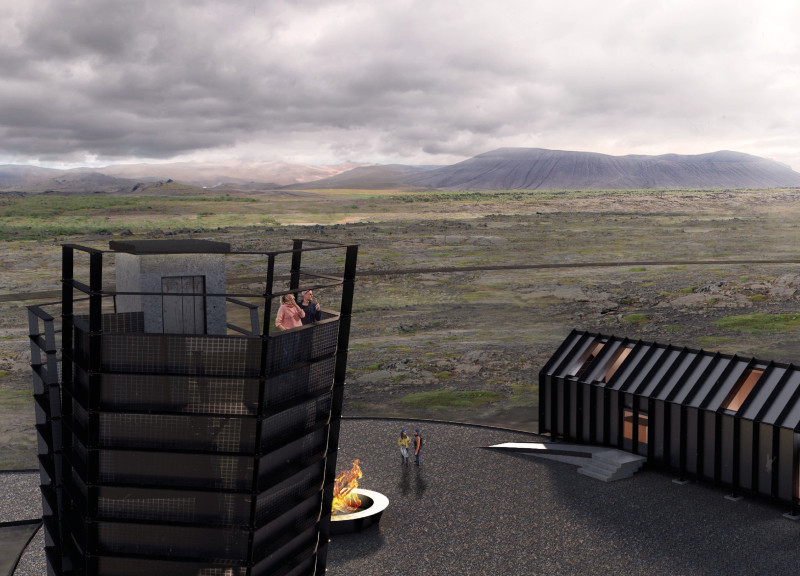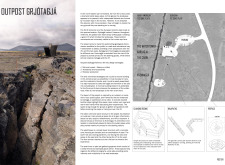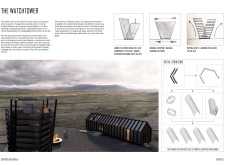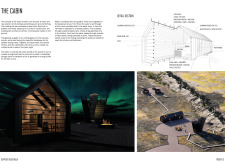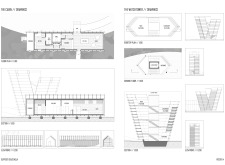5 key facts about this project
Outpost Grjótagjá is located in northeastern Iceland, where two tectonic plates, North American and Eurasian, meet. The setting, characterized by dramatic geological features, informs the design's purpose: to provide a space for visitors to engage with and learn about the landscape. The concept centers around an outpost or camp that prioritizes minimal impact on the environment while enhancing the visitors' experience of nature.
Cabin Design
The cabin forms the heart of the site, serving practical functions like providing information, refreshments, and restrooms. It is carefully oriented to offer privacy for guests using the nearby Kvennagjá cave while encouraging interaction in the central public area. This thoughtful configuration allows for both personal moments of reflection and opportunities for social engagement among visitors.
Watchtower Structure
The watchtower introduces an upward element, allowing for expansive views of the rift and the surrounding terrain. It features a concrete core that houses an elevator and is wrapped in a steel exoskeleton, enhancing its stability. The watchtower has two platforms for viewing—the first looks out toward the open landscape to the east, while the second focuses on the geological features of the rift, deepening the engagement with both nature and architecture.
Gathering Spaces
In addition to the main structures, oval-shaped gathering spaces supported by a metal frame filled with stomped gravel allow for community activities. These areas are not just functional; they enhance the overall experience by promoting connection among visitors in a beautiful setting. Their layout reflects the character of the site and accommodates various uses, encouraging people to come together.
Materiality and Aesthetics
The design uses a limited selection of materials, primarily concrete and steel. Concrete provides strength and resilience against the harsh Icelandic weather, while the rough black steel of the watchtower’s exoskeleton complements the rocky landscape. Patches of semi-shiny anthracite gray steel and clear glass add to the visual appeal, ensuring a consistent aesthetic that aligns with the natural environment.
A notable feature of the design is the central bonfire area, which serves as a gathering point for visitors. This inviting space creates a warm atmosphere amidst the rugged surroundings, allowing people to connect and share experiences. It stands as a focal point, drawing attention and encouraging communal activities among those visiting the site.


